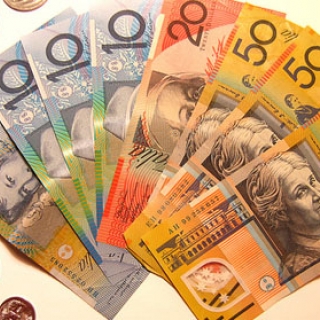


The Australian Dollar (AUD) edges modestly higher against the US Dollar (USD) on Tuesday, paring early losses as the Greenback comes under renewed pressure amid fresh signs of a slowing US economy.
The AUD/USD pair drifted lower for most of Tuesday's session but rebounded from an intraday low of 0.6449, climbing toward 0.6473 during American trading hours after the US ISM Services Purchasing Managers Index (PMI) disappointed market expectations.
The ISM Services PMI for July fell to 50.1, missing expectations of 51.5 and slipping from 50.8 in June, signaling a further loss of momentum in the U.S. services sector. While the headline reading still indicates marginal expansion, the details were more concerning. The Employment Index dropped deeper into contraction territory at 46.4, down from 47.2, highlighting ongoing labor market weakness. New Orders also declined to 50.3 from 51.3, pointing to fading demand.
More worryingly for the inflation outlook, the Prices Paid Index jumped to 69.9, up from 67.1, pointing to elevated cost pressures despite softening activity. The mixed signals further cloud the Federal Reserve's policy outlook, with markets increasingly leaning toward a rate cut in September. According to CME FedWatch, rate cut odds have climbed to 90%, contributing to the renewed weakness in the US Dollar and offering support to risk-sensitive currencies like the Aussie.
Earlier on Tuesday, the Australian Dollar found modest support from stronger-than-expected domestic PMI data. The S&P Global Services PMI for July climbed to 54.1, beating forecasts and the prior reading of 53.8, highlighting continued resilience in the services sector. Meanwhile, the Composite PMI edged up to 53.8 from 53.6, signaling steady expansion across both manufacturing and services.
That said, investor sentiment remains cautious ahead of the Reserve Bank of Australia's (RBA) monetary policy decision on August 12, with markets widely anticipating a 25 basis point rate cut to 3.60%. The dovish shift comes amid a notable slowdown in core inflation the RBA's preferred gauge, which eased to 2.7% in June, comfortably within the central bank's 2-3% target range. Markets have now priced in a nearly 95% probability of a rate cut this month and are expecting two additional reductions by early 2026.
Meanwhile, the US Dollar Index (DXY) retreated from an intraday high of 99.07 to trade near 98.77 during the American session, as traders reacted to the weaker ISM data and increased bets on policy easing by the Federal Reserve(Fed).
Source: Investing.com
The Australian dollar (AUD) moved steadily against the US dollar (USD) on Thursday following the People's Bank of China (PBOC) interest rate decision. The Chinese central bank held the Loan Prime Rate...
The Australian dollar fell to around $0.652 on Monday (November 17) after the US dollar strengthened sharply. The greenback's strengthening occurred because several Fed officials began to doubt the ne...
The Australian dollar held steady around $0.651 on Thursday, holding onto recent gains after the September trade surplus widened sharply to AUD 3.94 billion (vs. August's revised AUD 1.11 billion), be...
The Australian dollar weakened to around $0.647, hitting its lowest level in eleven weeks. This decline continued as risk-off sentiment in global markets intensified, overshadowing the Reserve Bank of...
AUD/USD firms as traders brace for Australia Q3 inflation data and Fed decision The Australian Dollar (AUD) edges higher against the US Dollar (USD) on Tuesday, extending its winning streak for the f...
The global silver price today (November 21) remained around $50-51 per troy ounce, slightly weaker than the previous day but still well above its early-year level. Fundamentally, silver's movement is again being pulled in two directions: on the one...
The Japanese yen held steady near 157 per dollar on Friday (November 21st), after previously weakening steadily. The currency began to "put on the brakes" after Finance Minister Satsuki Katayama signaled that the government could intervene if the...
The Hong Kong stock market opened lower in the morning session, with the benchmark Hang Seng Index falling 375 points, or 1.45%, to 25,460. Selling pressure was felt across the entire market. The Hang Seng China Enterprises Index fell 1.43% to...
 European markets opened lower on Tuesday (November 18th) as global markets weakened amid renewed concerns over AI-related stocks.
The pan-European...
European markets opened lower on Tuesday (November 18th) as global markets weakened amid renewed concerns over AI-related stocks.
The pan-European...
 Initial jobless claims in the United States reached 232,000 for the week ending October 18, according to data from the US Department of Labor...
Initial jobless claims in the United States reached 232,000 for the week ending October 18, according to data from the US Department of Labor...
 A divided Federal Reserve cut interest rates last month even as many policymakers cautioned that lowering borrowing costs further could risk...
A divided Federal Reserve cut interest rates last month even as many policymakers cautioned that lowering borrowing costs further could risk...
 US stocks finished higher on a volatile Wednesday session, reversing some of the sharp selling from the prior four sessions as markets digested a...
US stocks finished higher on a volatile Wednesday session, reversing some of the sharp selling from the prior four sessions as markets digested a...